By taking part in the Vertical Gallery, it gives further opportunities to develop my personal practice whilst also having the opportunity to work alongside my Synthesis and Resolution unit. Both projects work simultaneously, reflecting on the topic of land-based studies in response to the landscape of the Peak District.
Common Ground is the name of the explorative collective that I am a part of alongside fellow Manchester School of Art students, Abbie Fowler and Joab Harrison. Together, our aim is to investigate the depths of archaeology, geology, heritage and history of the Peak District National Park. We are grateful to be supported with this project through the Vertical/Holden Gallery team and the Historic Image Collection of the Peak District National Park Authority.
This page is dedicated to the extensive research and budgeting that have taken place as part of the commission and projects journey. Throughout the breadth of this project, there has been much development with both personal and group critical research and exploration. The work has evolved and changed throughout its course, and this is portrayed through my research documentation to show how I have developed this project into the resolved explorative collective that I am proud to have been a part of.
Starting point
At the beginning stages of the unit, when I approached Fine Art, Art History student Abbie Fowler to join me in a collaborative project to pitch for the Vertical Gallery commission, we were keen to develop our ideas into a multidisciplinary, nature-based communal workshop, that we would invite the public to take part in. Our pitch included how we would go on workshop-style walks in the Peak District, to document our findings and experiences of the landscape. We would bring these findings back to the workshops in Manchester and create a visual, explorative archive of documented material findings.
This involved much research into how we would conduct these workshops, and the practicalities of how this would be formed. Also, as part of the Vertical Gallery commission, we are allowed a budget to aid us with the project. This is also something we had to work out due to the uniqueness of the project.
EDIE EVANS
We have taken inspiration from the artist Edie Evans for this project. She works with wild clay and large-scale fabric tapestries. Her project Earth Notes (2023) addresses how raw clay from different locations around the UK can tell stories of time, place, and memory through the artist's journey when working with the ground. For this project, I believe that a waterfall drop of natural fabric, similar to how Evans drapes her fabric, would be an effective way to display a tangible, interactive piece of art.
Ground Workshops
I have been further inspired by Ground workshops, which I originally looked into during Unit X. They work seasonally with artists who make with materials from the land, as part of a community-led project offering workshops on sustainable design and living with the land in mind. These community-style workshops are something that I have an interest in for this project, due to the sustainability focus and local land initiative.

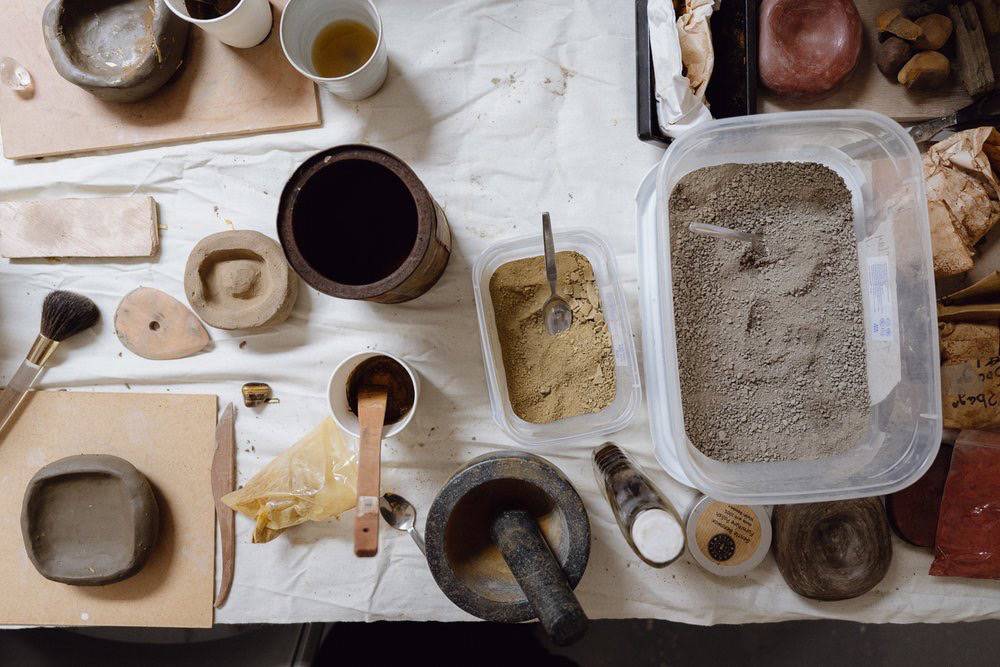
I have been in touch with Gabriella Rhodes, who has also led workshops as part of Ground Workshops, to ask for some more information about working with wild clay in workshops. It was great to get in touch with her, and even though she was understandably busy, it was good to get some recommendations and support for our project and development.
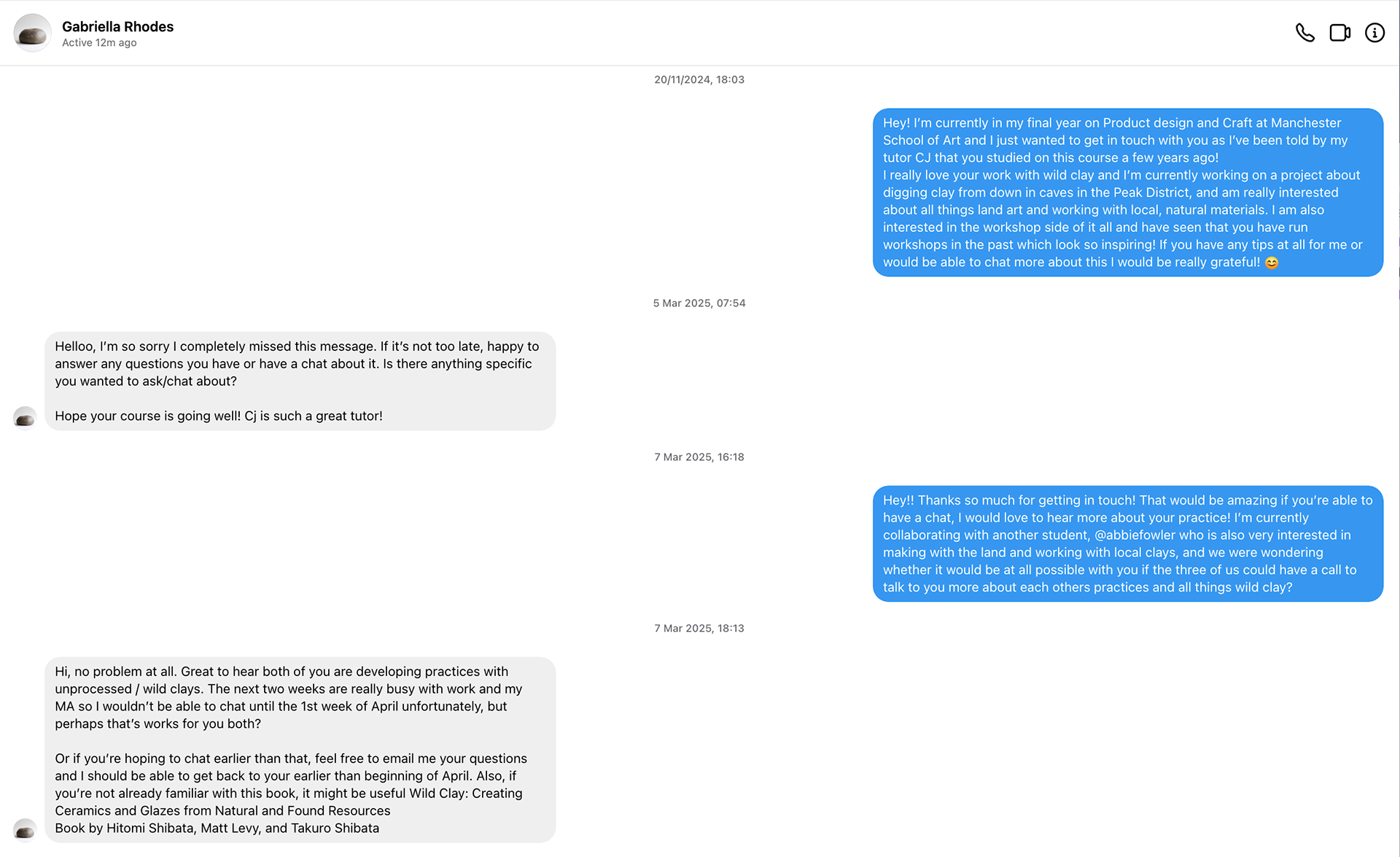
Conversation with Gabriella Rhodes
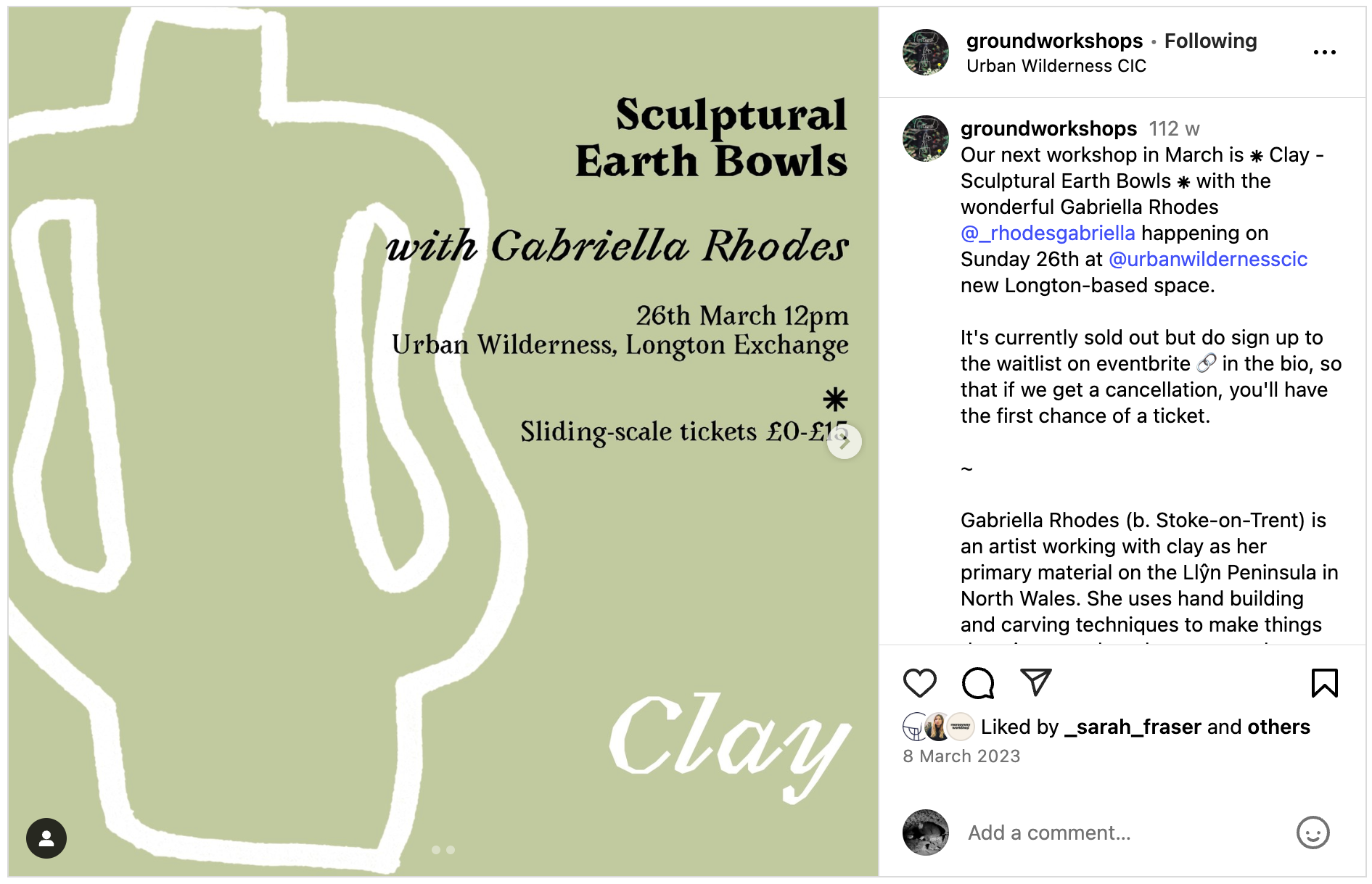
Workshop advertisement from 2023
Our initial pitch included a breakdown of our prices we require, and also a mockup version of how we envision our work existing in the space of the Vertical Gallery that we are pitching for.
We originally budgeted for £950. This is a lot of money to request, however, we have budgeted for an external videographer. As part of our project, we wanted to document the workshops that we intended to do in the form of a video or documentation of the day's workshop.
We have also budgeted for material costs, which include the fabric for the clay tapestries, the food and drink required for the workshops, and the travel costs.
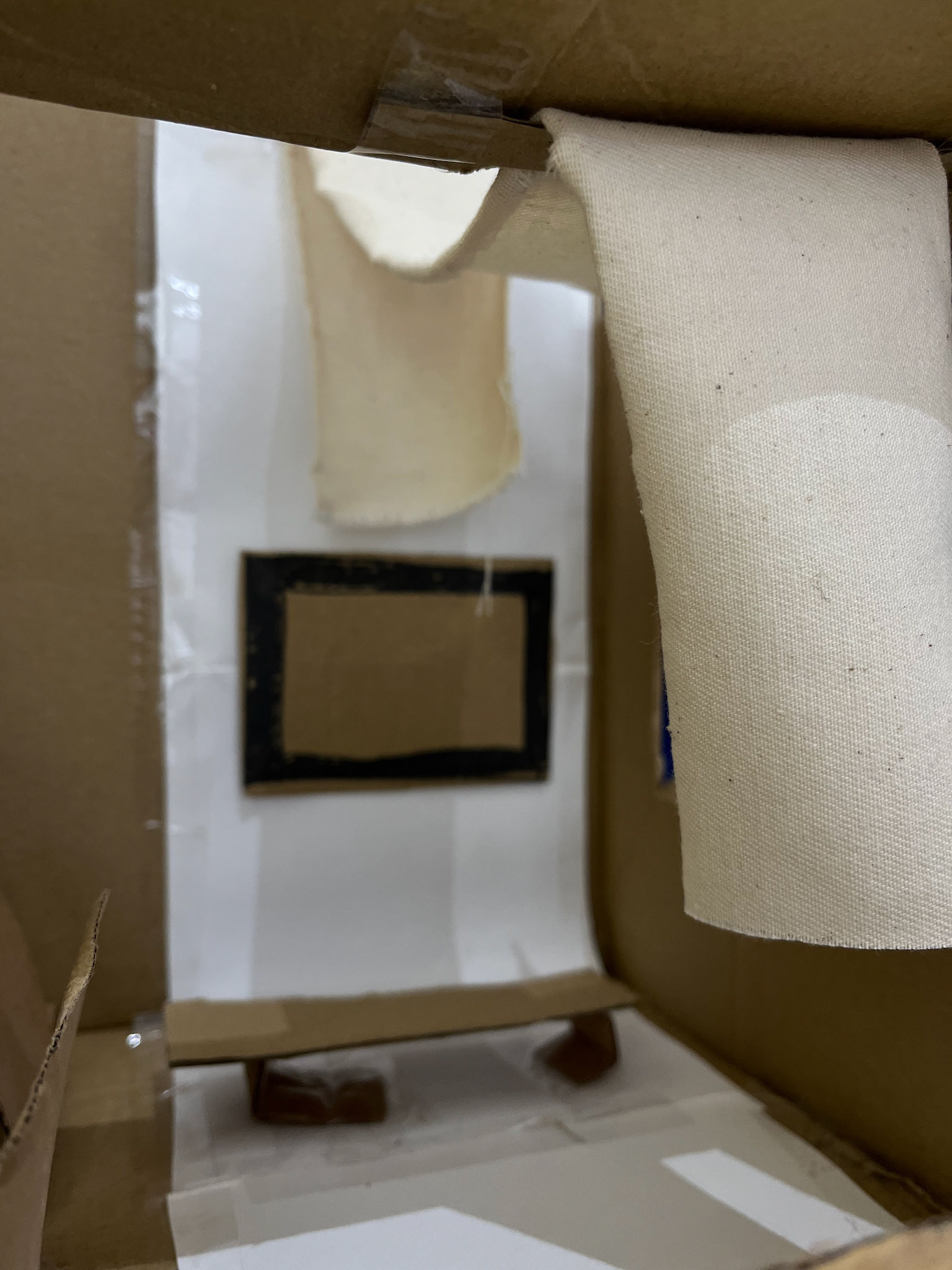

This is the mockup installation that we brought to the pitch to show a visual representation of how we envision the space looking.
Change of direction
Due to the changes in direction after getting shortlisted for the commission, our project has changed. After speaking with Kate and Victoria, who are the tutor leads for this commission, we have agreed that we will be working on a slightly different style of project, in further collaboration with fellow student Joab Harrison.
To find out more about this change of direction, follow this link to my collaboration page, which discusses in more depth how this project will be taking place.
As this project will now take the form of a more interactive site-specific installation, with the inclusion of a filmmaker student, the type of research and thinking has been adapted. I am now interested in looking at more visually immersive practices, which take the form of artistic installation films based on a landscape.
Soil, Somerset house
I visited the Soil exhibition at Somerset House during my trip to London. This was a great source of inspiration for this project, as it opened my eyes to different ways of presenting land-based work in various media. Many films were exhibited and presented through curved screens with a back fabric panel for viewers to sit, making an enclosed space. I found this effective way of portraying film, as it meant that the sound was contained in the space. This is something that I think would be successful for our installation as a way to project our film in a confined space.
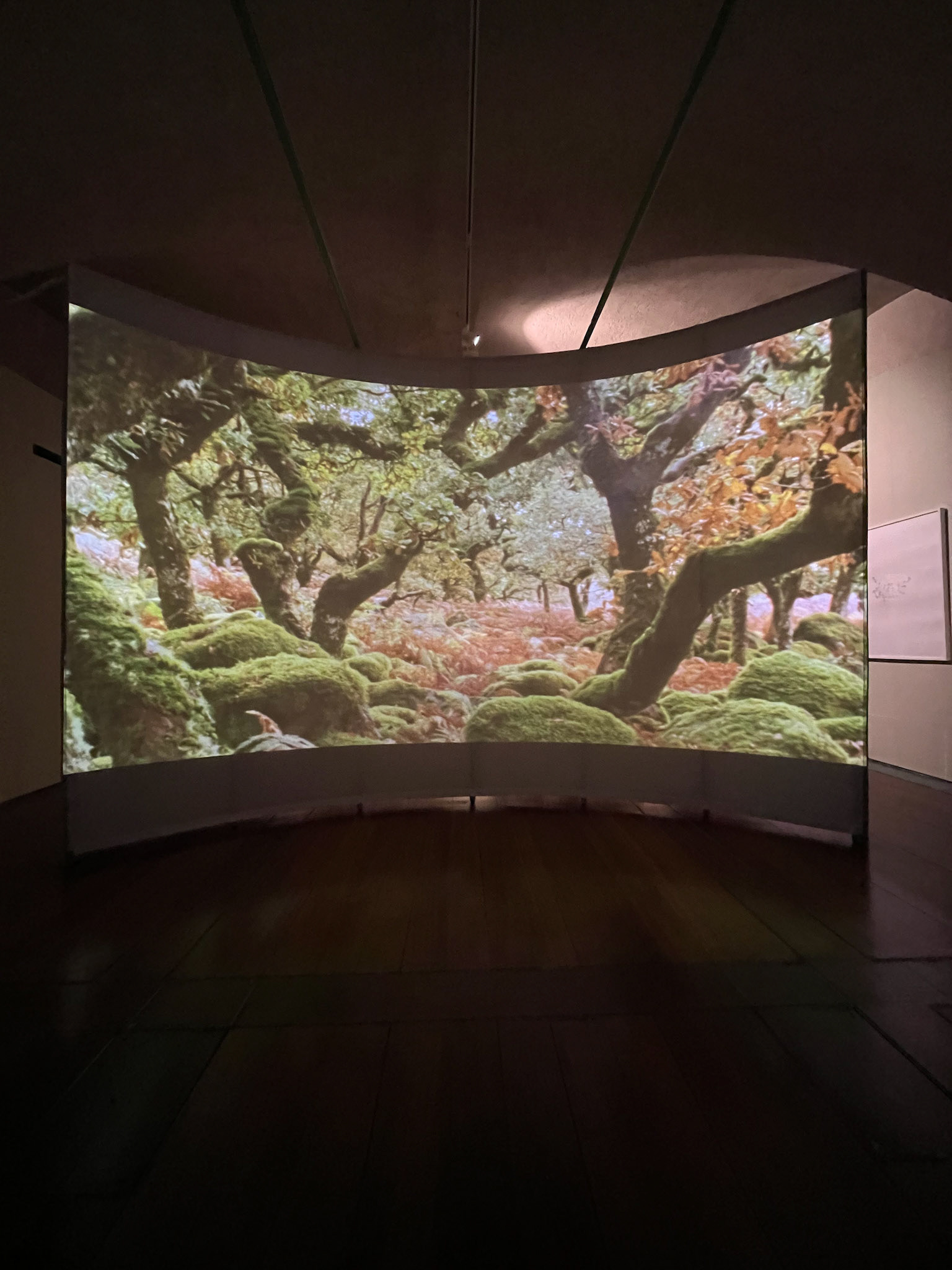
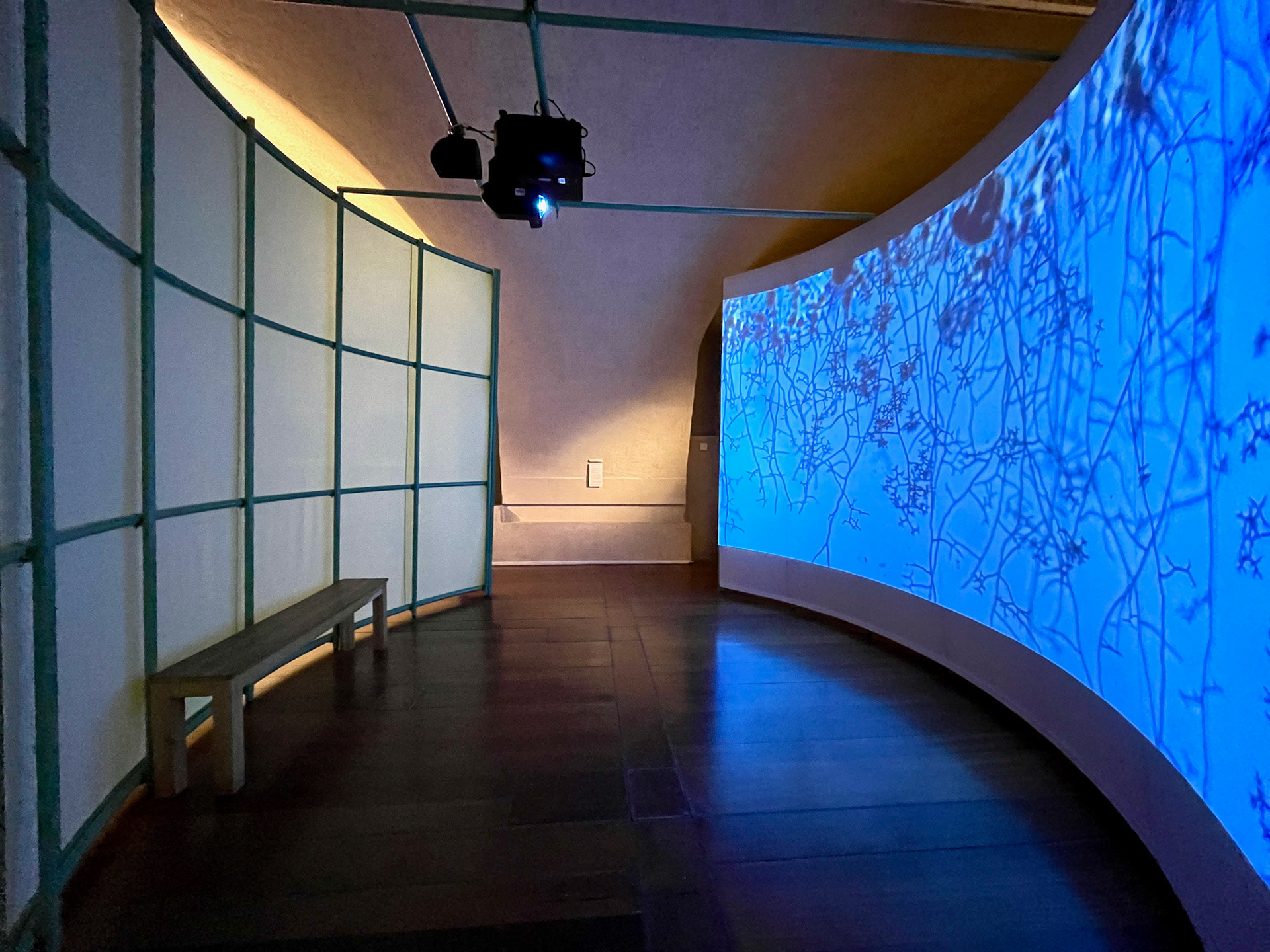
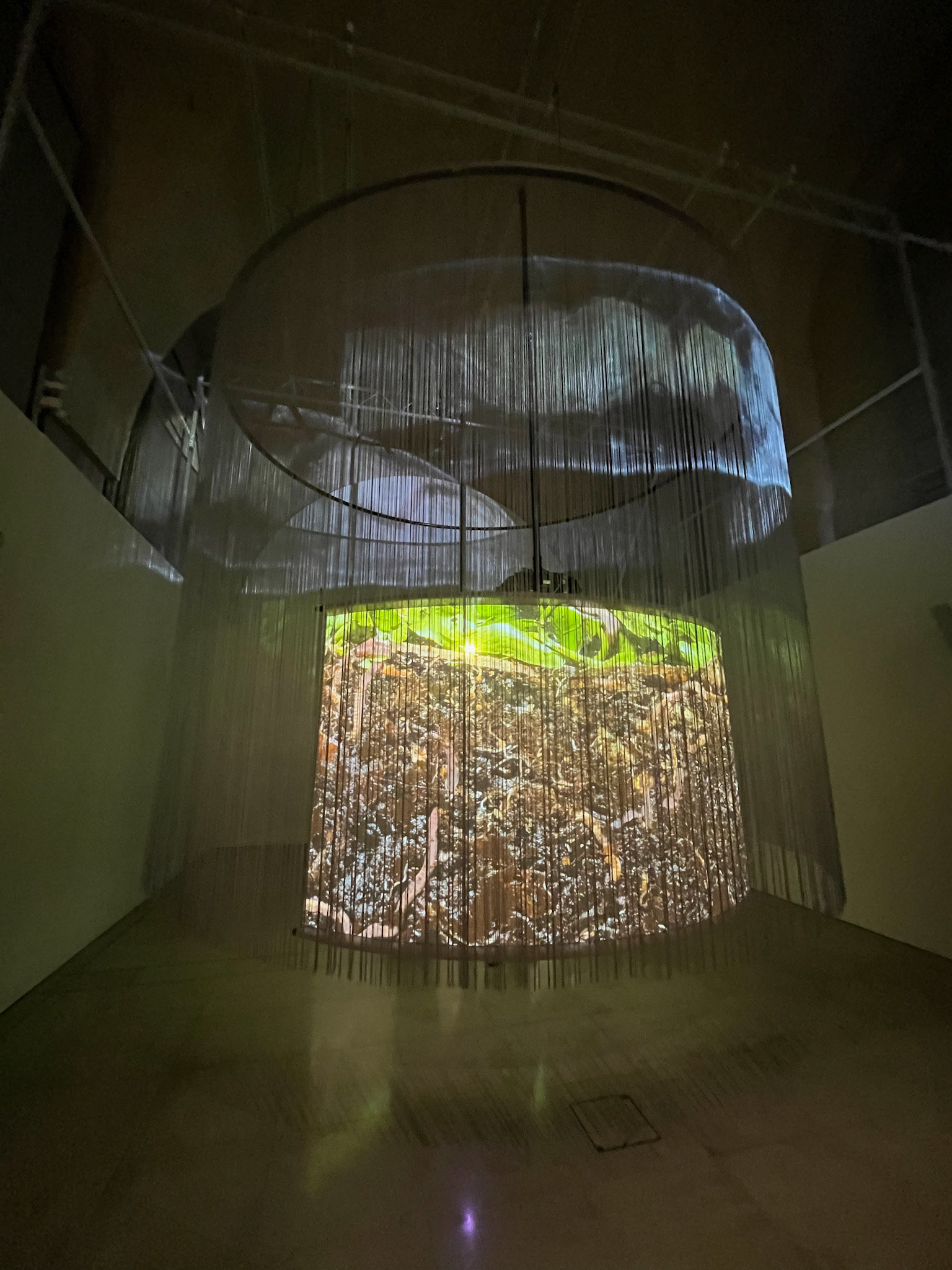
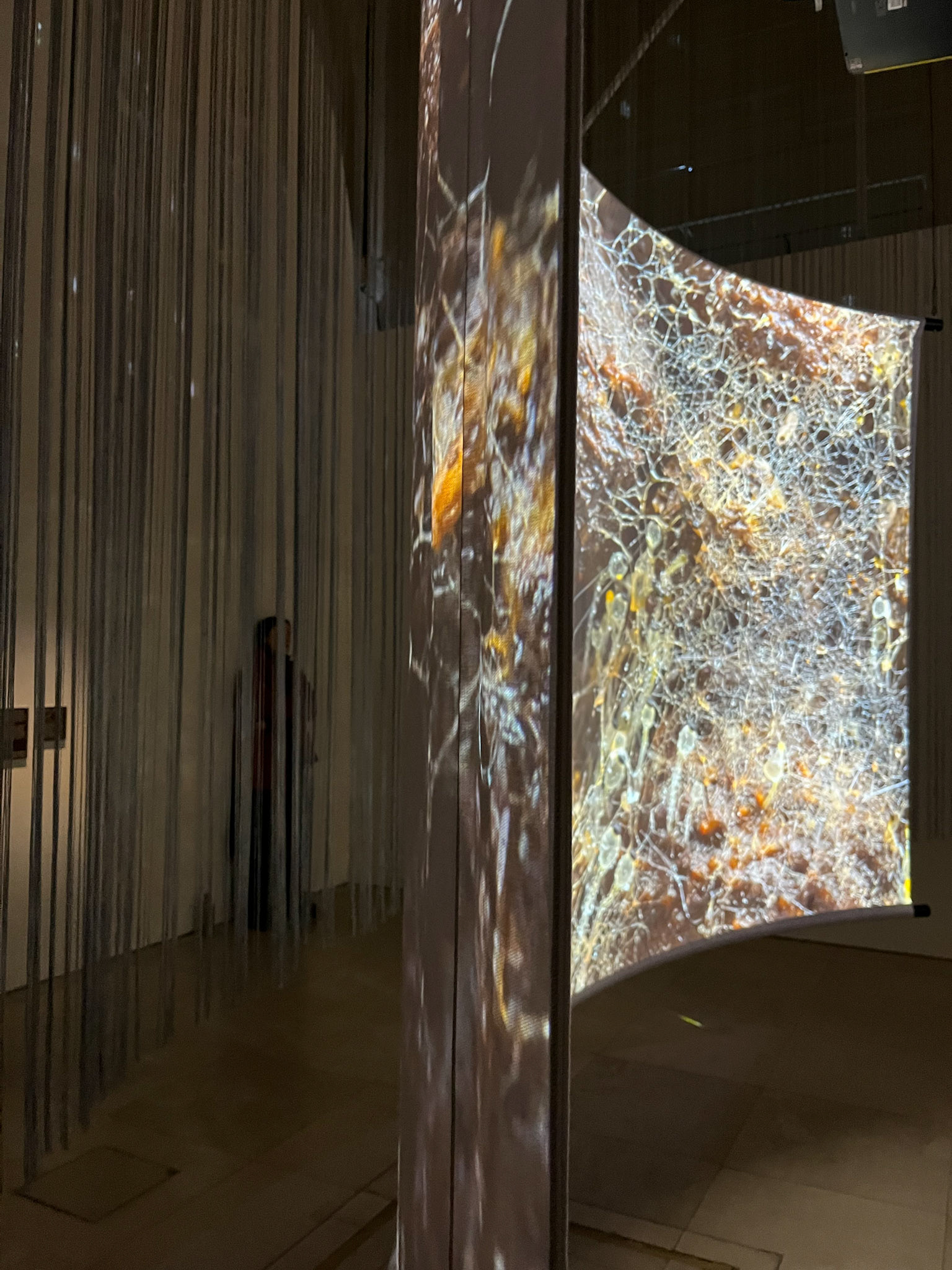
Venice Biennale Inspiration
Looking back on the trip to Venice, we noticed similarities in how we envision our work being presented to how certain pavilions in the Biennale were exhibited. I took note of the use of fabric throughout the show, as this was something that ran throughout a lot of the pavilions.
The way the Philippine pavilion was curated influenced us in our proposal's thought process. The curved, translucent fabric hangs throughout the room at different heights from the ceiling with text and prints, allowing the viewer to walk around the space and see the work from different perspectives. The artist states that this curtain textile is used to calm the light of the space. The work is a breadth of textiles, stone sculptures, and soundscapes. In this room, a constant sound played as if it were coming from the main sculpture, which replicates the sounds of nature from the location that inspired the work. There is also video work in this space, exploring the "ethno-ecologies" of the mountain from which the work inspires.
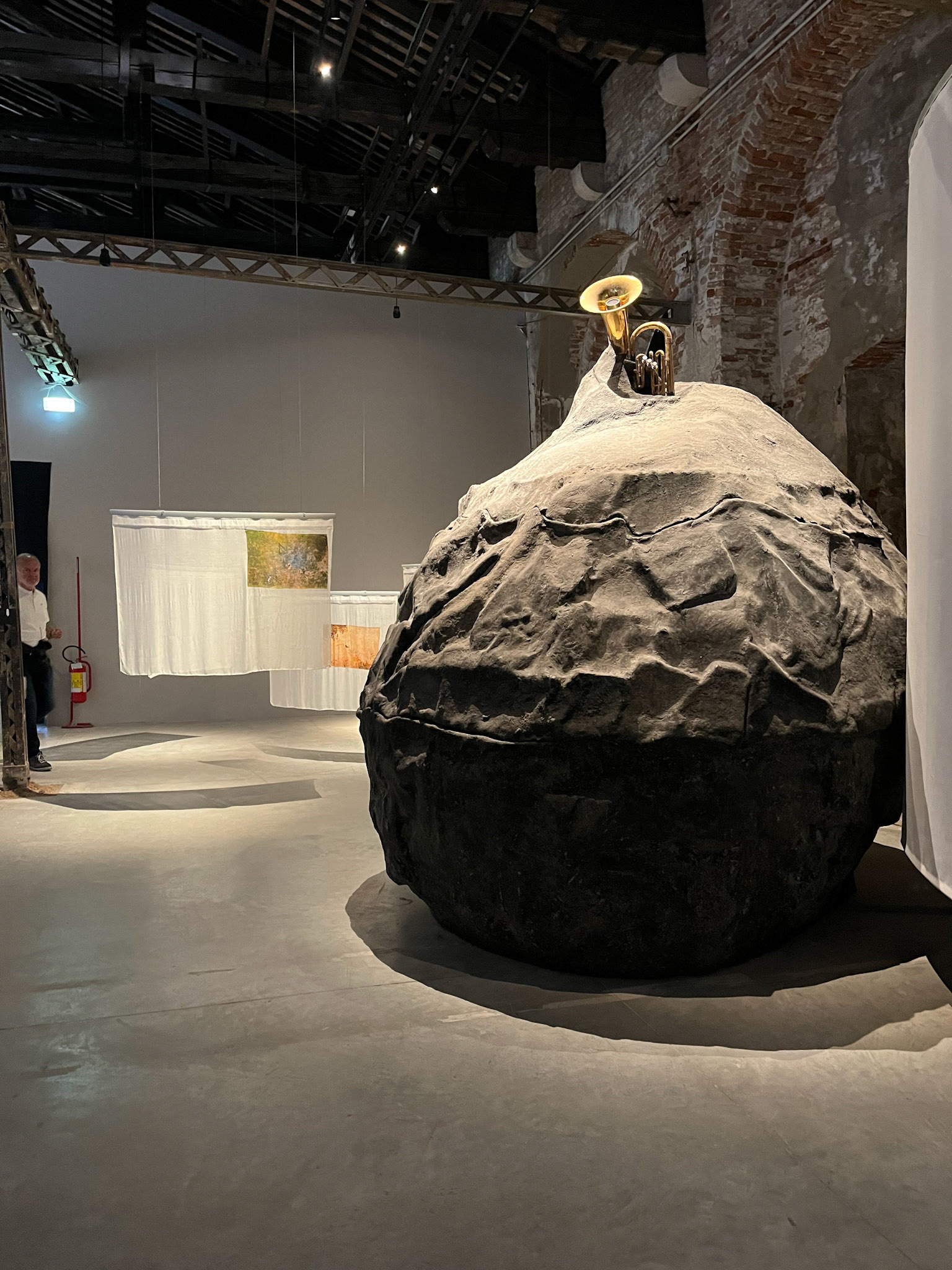

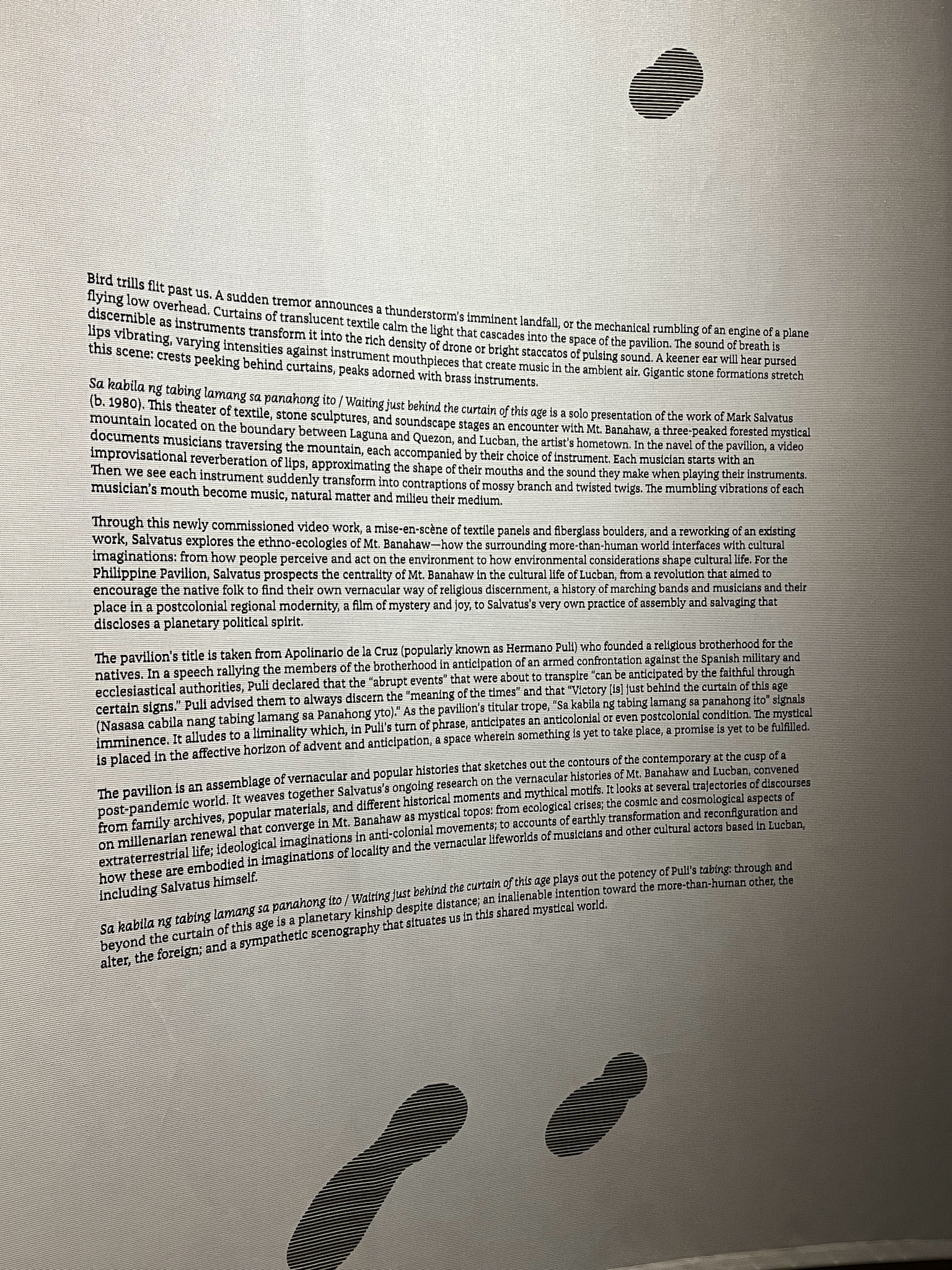
Ingrid Pollard talk
I was lucky to attend a talk by renowned photographer and artist Ingrid Pollard. Through this talk, the artist gave an insightful overview of her lifespan of work and how she uses landscape to explore social constructs. The main part of the talk that interested me was when Pollard discussed the idea of a 'managed landscape'. So much of Britain's landscape, whether rural or urban, is managed and regulated. The Peak District- the UK's first national park- is a particular example of a managed landscape, due to the moorlands, farmlands, and valleys being shaped by the human footprint. Through this project, I am interested in exploring this sense of a managed landscape further, and assessing how I can reflect on the significance of the Peak District's managed landscapes through working directly with the land.
Pricing
This is the budget for our project. We must fabricate many materials, such as the steel rail, to hang the curtain and find the right fabric. We will also be able to budget the cost of the petrol needed for the car journeys to and from Manchester and the Peak District.
It was valuable to learn this pricing information, as this gave me a better insight into how pricing works and each step I need to consider. As this is a real brief, and it is funded and led as a real-life external exhibition project, it is very useful to gain the knowledge that I am learning throughout it. It was initially quite hard for me to work out the budget and all the requirements. Due to the many different steps in our project, I had to break down each one individually and work out whether to source them externally or if it was possible to make things in uni. For most, it worked out better to externally outsource them, for example, with the curtains, as we found sellers we will be trialling.


Peak District Archives
On the 17th April, Abbie, Joab and I visited the Peak District Archives at the Peak Authority. We could access the national park archives and look at the old slides dating back to the 1970s and 80s. We could search through the filing cabinets, which were full of photographs of life in the Peak District, from the people and agriculture to the erosion, flora and fauna, and look at our findings through slide camera technology and light boxes. This research gave us much more insight into the area's history and how it differs from what it is like now.
Through our findings, I was excited to see the documentation of the millstones of Lawrencefield, and how the footage from 40 years ago compares to how I am documenting them. The slide of the millstones covered in snow with bare trees and a barren landscape differs hugely from the landscape I am looking at now. Despite the seasonal difference, it shows the ecological and environmental differences that 40 years can have on a place.
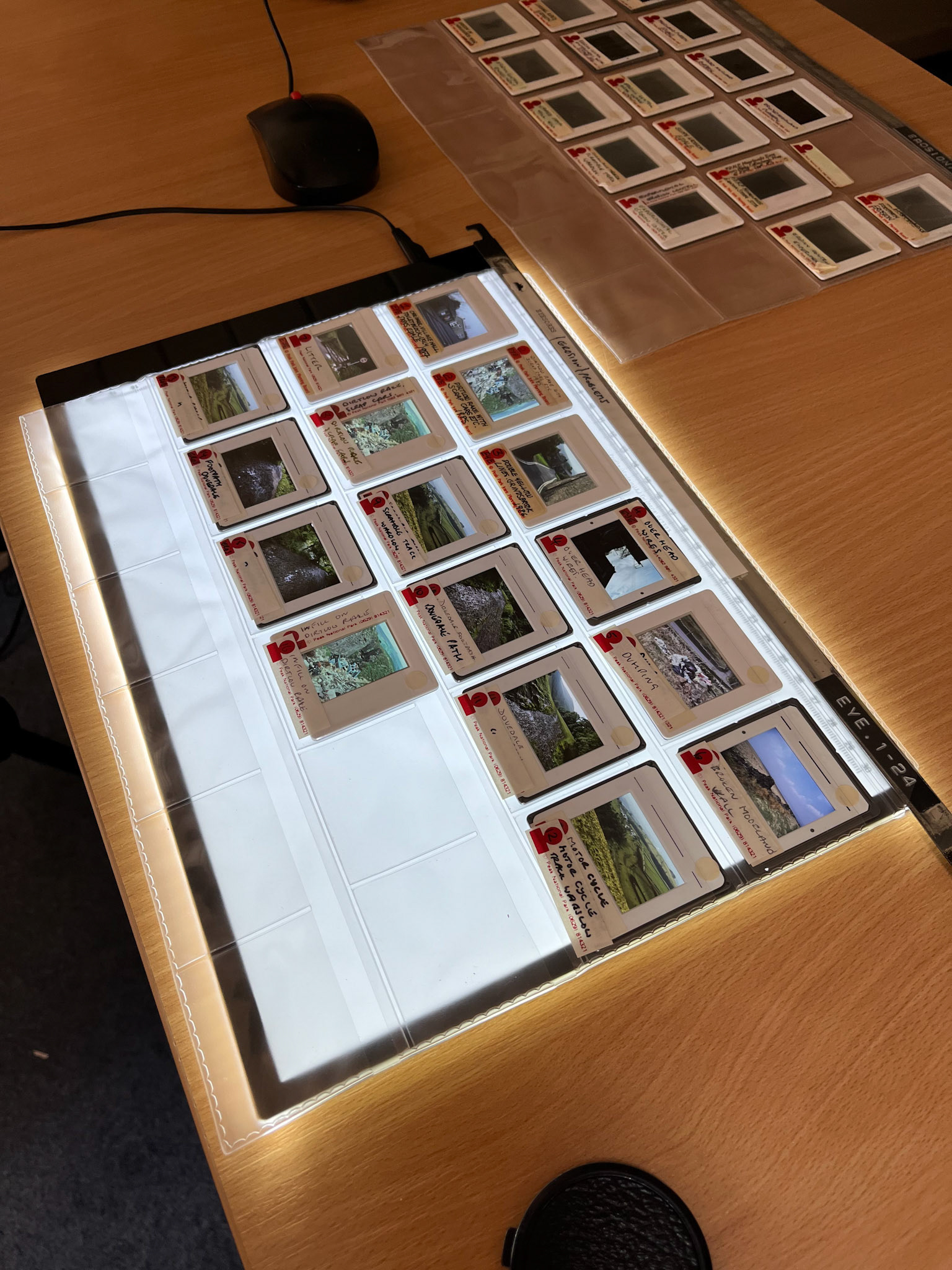
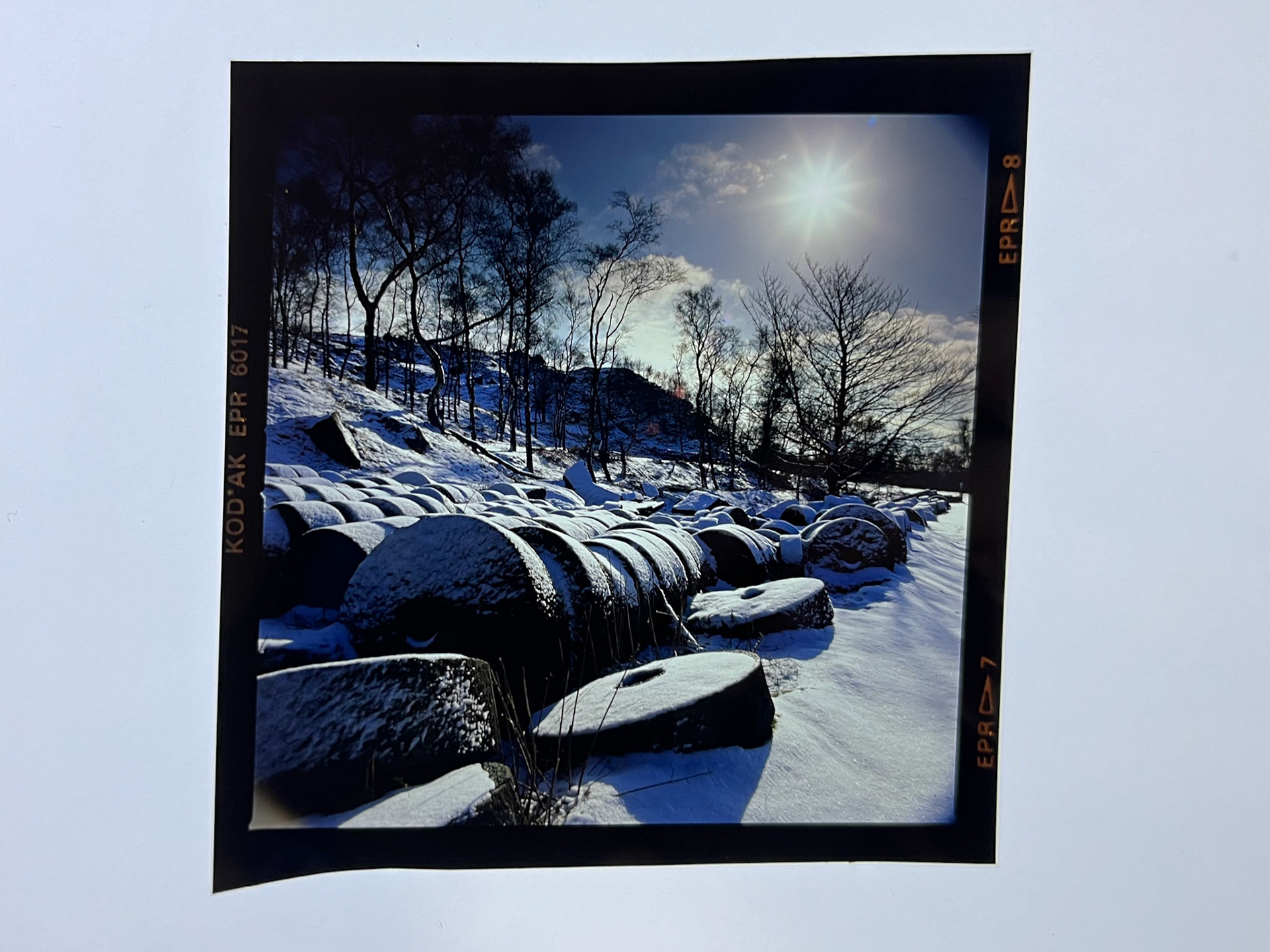

Updated budget tracker
This is our updated budget tracker, which is shared with the Holden Gallery team, and is to check that we are keeping on budget and keeping all of our costs organised. It has been useful to do this as it has meant we are keeping track of what we are spending, and as I am working collaboratively, with two other students who are also contributing to the costs, it is important that each of us keeps track of our individual spending.

